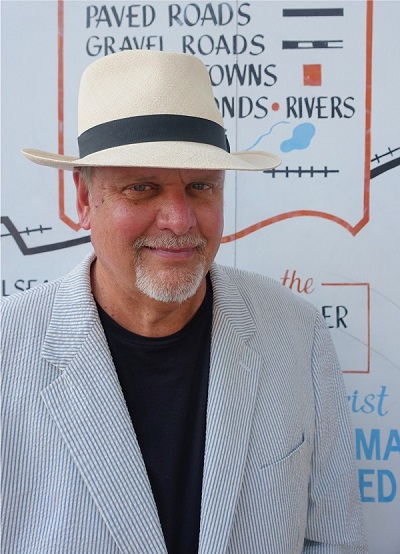
STRIKING GOLD IN THE MUSICAL YUKON
ROHNERT PARK, CA—A composer can still strike gold. Yet today.
I had Michael Daugherty, 68, pegged for a 21st-century Ferde Grofé—-a skilled tone painter in music for our times. Until, that is, we got to the finale of his new suite for and about Sonoma County, “Valley of the Moon.”
That finale segment, “Call of the Wild,” was immensely engrossing. Instead of the expected happy music, Daugherty here turned troubled, unsettled and enigmatic, much like the adventurous author of said novel, Jack London. In his life, the devil-may-care Californian London had had more ups and downs than a rollercoaster, with his turn-of-the-century books translated into dozens of languages. Aren’t our favorite heroes the most enigmatic ones?
In D’s “Call of the Wild,” after the horns’ robust fanfare theme, the rest of the brass joins in ominously, full of uncertainty and anticipation. A turbulent orchestra in effect fleshes out not just that epic book about the hard-scrabble Yukon miners, but also London’s own life. Many questions remain unresolved, portending a clouded existence (at least in the reaction from this corner). The dour tuba sounds a five-tone melody, and muted trumpets ensue, plus tattoos on timpani. Abrupt pauses and dissonance further unsettle the mix.
The rest of the 33-minute, four-movement suite was well-crafted though more placid, divided into “Out of the Fog,” “Shadow of the Birds” and “Air on the Redwoods.”
“The Birds,” alluding to Alfred Hitchcock’s scary film, features a fast-pecking flock via percussion, with syncopation suggesting violence. And “Redwoods” quoted the Bach theme we know as Air on the G String, but from afar.
The Santa Rosa Symphony sounded solid as a rock throughout playing in the warm acoustics of Weill Hall.
At the end, with some of the night’s most spirited ovations, Music Director Francesco Lecce-Chong was hugged by Daugherty himself, though the latter was a good foot taller. Lecce-Chong had introduced the work with annotation and short musical examples played live.
A D Major Violin Concerto by the 20th century Austrian émigré Erich Wolfgang Korngold was performed by Elena Vähälä from Finland. She had no robust rafter-ringing tone (in Weill Hall, anyway) but was evocative in her interpretation, playing the first notes of the piece, then going thru a highly demanding cadenza (solo display segment). She clearly mastered all the virtuosity, which was considerable; the work had been produced for the 1947 world premiere played by the consummate virtuoso, Jascha Heifetz. Notable were the fine-honed, rotund horn solos by Alex Camphouse.
The work brings forth some seductive lyrical tunes, but in the end it sounds very much like movie music. No surprise—-in his later years. Korngold lived in Hollywood.
Debussy’s “Prelude to the Afternoon on a Faun” also began with a solo, this time by the principal flutist, Kathleen Lane Reynolds. Preceded by the waltzes from the Overture to Strauss’ “Fledermaus” Operetta. Both of these are played differently in the country of origin: Back in France, the Debussy ideally has wisps of ill-defined fog blurring bar lines in the score, with constant little shifts of dynamics and tempo. As for Johann Strauss Jr. waltzes back in Austria, they are inevitably played with the 2nd beat of each measure coming slightly earlier, giving the piece more impetus and intoxication—something that the Viennese play instinctively, without instructions in the score.
So on May 7, the Daugherty world premiere was the most satisfying piece of all.
To me the tragedy is that once the three performances are past, we may never hear the Daugherty opus again (It being already the 3rd world premiere the SRS tackled in 2022!). There are no radio broadcasts, nor any mention of possible recordings, despite Daugherty’s vaunted reputation as a repeat Grammy-Award winner.
SANTA ROSA SYMPHONY, Francesco Lecce-Chung music director, with Daugherty world premiere at Weill Hall, Rohnert Park, CA, May 7, 8, 9. For info: (707) 546-8742, or go online: www.srsymphony.org.